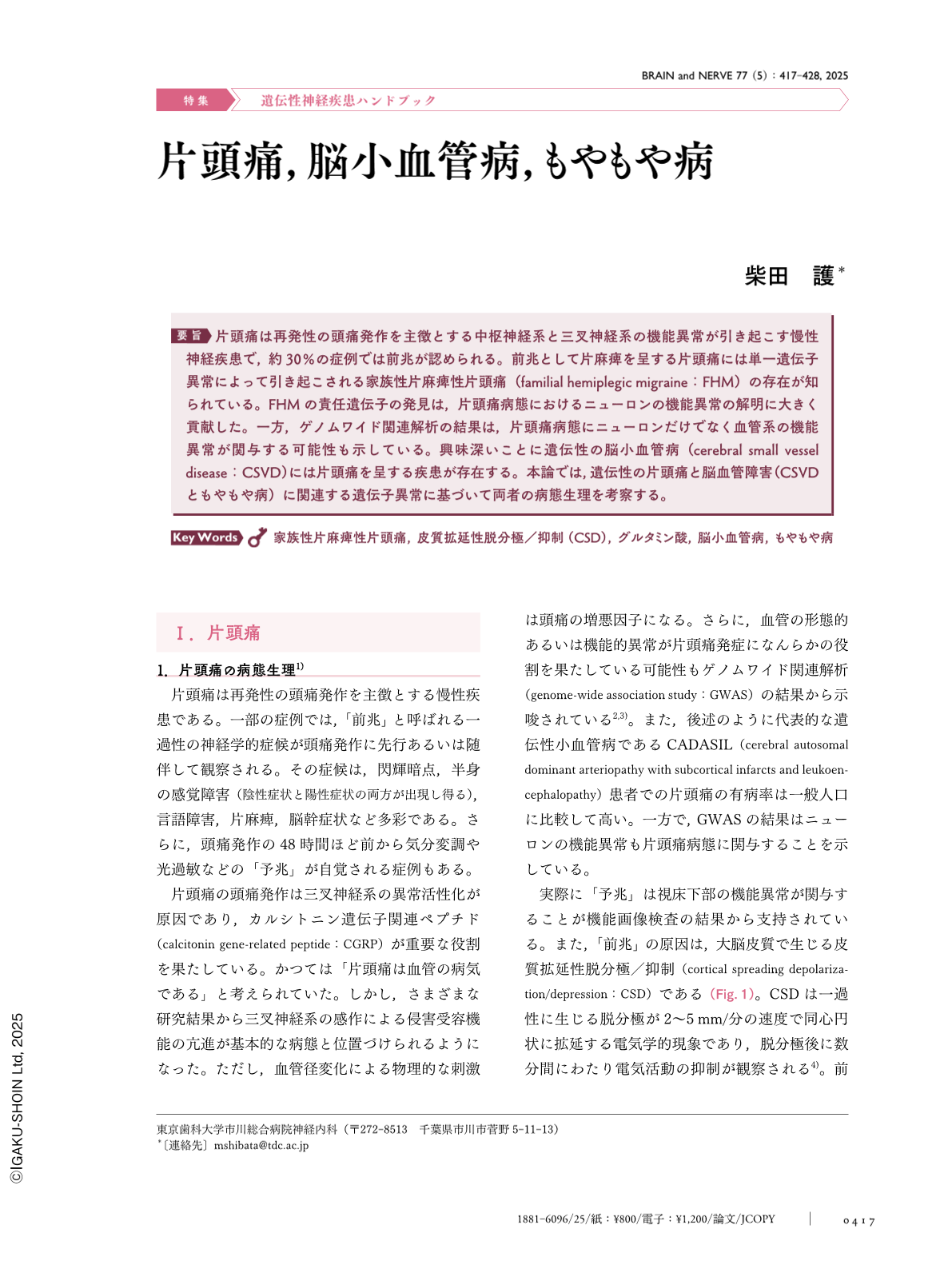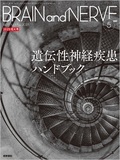Japanese
English
- 有料閲覧
- Abstract 文献概要
- 1ページ目 Look Inside
- 参考文献 Reference
片頭痛は再発性の頭痛発作を主徴とする中枢神経系と三叉神経系の機能異常が引き起こす慢性神経疾患で,約30%の症例では前兆が認められる。前兆として片麻痺を呈する片頭痛には単一遺伝子異常によって引き起こされる家族性片麻痺性片頭痛(familial hemiplegic migraine:FHM)の存在が知られている。FHMの責任遺伝子の発見は,片頭痛病態におけるニューロンの機能異常の解明に大きく貢献した。一方,ゲノムワイド関連解析の結果は,片頭痛病態にニューロンだけでなく血管系の機能異常が関与する可能性も示している。興味深いことに遺伝性の脳小血管病(cerebral small vessel disease:CSVD)には片頭痛を呈する疾患が存在する。本論では,遺伝性の片頭痛と脳血管障害(CSVDともやもや病)に関連する遺伝子異常に基づいて両者の病態生理を考察する。
Abstract
Migraine is a chronic neurological disorder that is clinically characterized by recurrent headache attacks. Approximately 30% of migraine sufferers experience transient neurological symptoms, termed aura. Several monogenic migraine syndromes present with hemiparesis/hemiplegia as an aura. Familial hemiplegic migraine types 1,2, and 3 are registered in the OMIM database. Although the discovery of the genetic abnormalities underlying these syndromes has advanced our understanding of migraine pathogenesis, especially regarding neuronal mechanisms, genome-wide association studies focusing on migraines have also highlighted the importance of vascular dysfunction. Intriguingly, hereditary cerebral small-vessel diseases are frequently associated with migraines. This article reviews the pathophysiological mechanisms of migraines and cerebrovascular diseases (cerebral small vessel disease and moyamoya disease) from the perspective of genetic abnormalities.

Copyright © 2025, Igaku-Shoin Ltd. All rights reserved.


